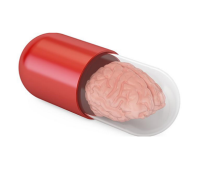
Citing long-term patient adherence to medication as low as 50%, Cole said by introducing a smart element to their pharmaceutical packaging, companies could incentivize an increase in adherence and thus easily recoup the extra outlay, particularly for high mark-up products.
“With a 1,000% mark up, we can actually afford to spend three times as much on our packaging and get the same amount of income, provided we are getting an improvement in adherence,” he said.
Cole defined smart packaging as two types: active packaging which extends the protection function of goods and intelligent packaging which extends the
function of providing information, such as sensing and logging data.
“Intelligent packaging might want to monitor the external environment of our goods, via temperature and shock sensors and communicate that information to help reduce supply chain losses,” he said.
He said choosing the most appropriate technology for smart packaging is crucial and gave the example of flexible hybrid electronics technology, which he
described as a way of getting electronic features into materials and areas which are not possible using rigid electronics.
“It’s thin, high functionality, and it gives you flexibility of form and design so you can start to embed your material into your blister foils and primary and
secondary boxes,” he said, adding that the technology could be used to produce smart adherence packs and blisters or embedded into combination devices to make smart inhalers.
With the pharmaceutical industry needing to maintain large stocks to ensure good service levels, Cole said smart packaging presented a market opportunity for companies which require greater visibility of activity along the supply chain leading to reduced stock levels and greater clarity of demand signals.






